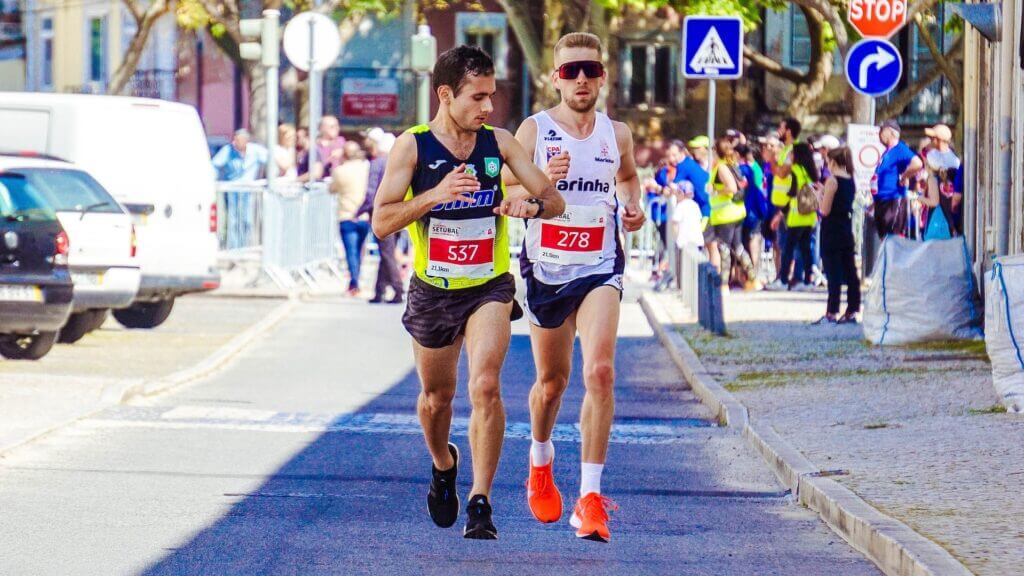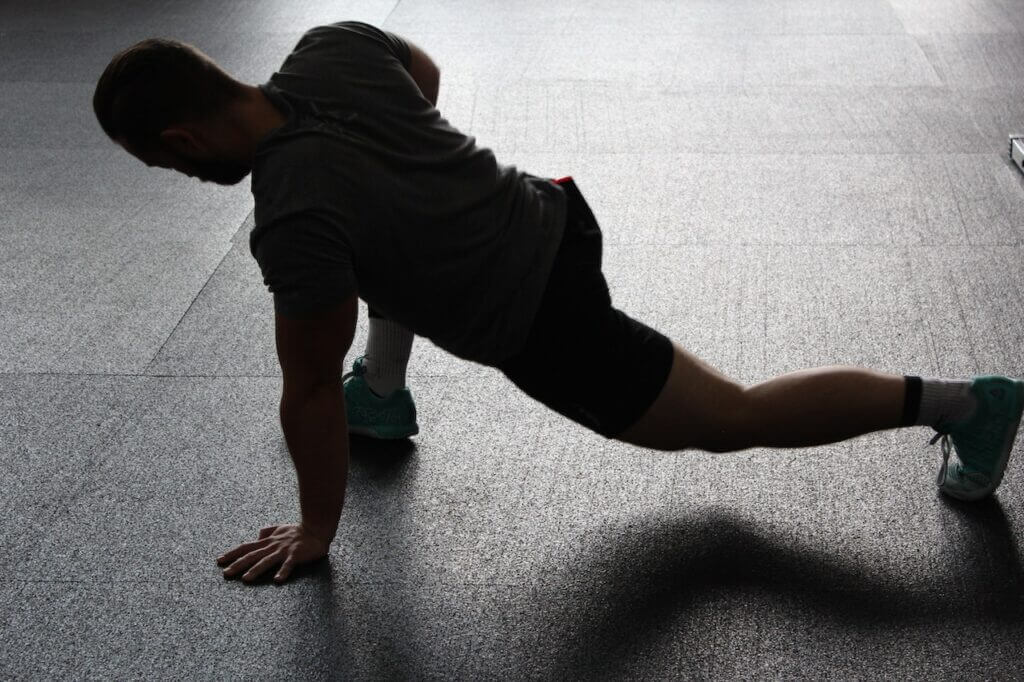Are you looking to take your running game to the next level? Want to prevent injuries and improve your running form?
Look no further than hip drop running! In this blog post, we’ll dive into the fascinating world of hip drop running, exploring how it can be the key to both injury prevention and efficient form. Whether you’re a seasoned runner or just starting out, understanding and incorporating the technique of hip drop running can revolutionize your training.
So lace up your running shoes, because we’re about to uncover the secrets that can help you unlock your true running potential. Get ready to stride with confidence, power, and precision as we delve into the world of hip drop running.
Table of Contents
Understanding Hip Drop in Running
Hip drop, also known as lateral pelvic tilt, refers to the downward or sideways movement of one hip during running. It occurs when the muscles responsible for stabilizing the pelvis, such as the gluteus medius and hip abductors, are weak or imbalanced. As a result, one hip drops lower than the other, causing an asymmetrical running form.
Impact on running mechanics
Hip drop significantly affects running mechanics and can have a detrimental impact on form, efficiency, and overall performance. When one hip drops, it disrupts the body’s natural alignment and causes a chain reaction of compensatory movements. The negative effects of hip drop include:
Reduced stability
Hip drop compromises the stability of the pelvis and the entire kinetic chain. It creates an imbalance in weight distribution and increases the risk of tripping or falling during running.
Decreased efficiency
The energy transfer from the lower body to forward propulsion becomes inefficient due to hip drop. The body has to work harder to compensate for the asymmetry, leading to wasted energy and decreased running economy.
Altered running mechanics
Hip drop affects the alignment of the spine, pelvis, and lower extremities. It can cause excessive rotation or tilting of the pelvis, resulting in compensatory movements in the knees, ankles, and feet. This misalignment can negatively impact stride length, cadence, and running rhythm.
Muscle imbalances
Hip drop can contribute to muscle imbalances, with some muscles becoming overactive and others becoming weakened. The overactive muscles, such as the hip flexors and lumbar extensors, may become tight and prone to strain. Conversely, the weakened muscles, particularly the gluteus medius and hip abductors, may lead to decreased strength and stability.
Potential injury risks
The presence of hip drop in running increases the risk of various running-related injuries. These injuries may include:
IT band syndrome
Hip drop can place excessive stress on the iliotibial band (IT band), a thick band of connective tissue running along the outside of the thigh. The IT band can become inflamed and cause pain, especially when it inserts into the knee.
Patellofemoral pain syndrome
Hip drop alters the alignment of the patella (kneecap), leading to improper tracking and increased pressure on the patellofemoral joint. This can result in knee pain and discomfort, known as patellofemoral pain syndrome.
Shin splints
The imbalanced forces generated by hip drop can contribute to shin splints, a painful condition characterized by inflammation of the muscles, tendons, and bone tissue in the shins.
Lower back pain
The misalignment caused by hip drop can also strain the lower back muscles, leading to discomfort and potential lower back pain.
Understanding the negative impact of a hip drop on running mechanics and its association with potential injuries underscores the importance of addressing this issue. By focusing on correcting hip drops, runners can improve their form, enhance efficiency, and reduce the risk of injury, ultimately leading to a more enjoyable and successful running experience.
Why Correcting Hip Drop Matters

A. Improved biomechanics
When you run, your body relies on a complex interaction of muscles, joints, and movement patterns to maintain optimal form and efficiency. Hip drop, also known as Trendelenburg gait, disrupts this delicate balance. It occurs when one hip drops lower than the other during the stance phase of running.
Addressing hip drop is crucial for improved biomechanics. By correcting this asymmetry, you can achieve better alignment throughout your body. When both hips are level during each stride, it helps maintain proper pelvic alignment and reduces excessive strain on the lower back, hips, knees, and ankles.
Moreover, correcting hip drops enhances stability during running. With balanced hip alignment, you can stabilize your core and maintain a more controlled stride. This stability translates into better balance and coordination, which are essential for efficient and injury-free running.
In addition, fixing hip drops promotes optimal energy transfer. When your hips are level, the force generated from each stride can flow more efficiently through your body. This allows for better propulsion and forward momentum, maximizing your running performance.
B. Enhanced performance

Correcting hip drop can significantly optimize running efficiency and speed. When you address this form issue, your running mechanics become more streamlined, resulting in several performance benefits.
Firstly, correcting hip drop improves stride length and cadence. With level hips, you can extend your stride fully and achieve a longer, more powerful stride. Additionally, by maintaining balanced hip alignment, you can increase your cadence, which refers to the number of steps you take per minute. A higher cadence is associated with improved running efficiency and reduced ground contact time, allowing you to cover more distance with less effort.
Furthermore, correcting hip drop enhances muscular coordination and engagement. When your hips are aligned, the muscles in your glutes, hip abductors, and core can work more harmoniously to generate power and stability. This coordinated muscle activation translates into the improved running economy and greater propulsion during each stride.
Overall, correcting hip drop leads to better running efficiency, allowing you to use less energy for the same distance. This efficiency not only enhances your endurance but also helps you maintain a faster pace over extended periods.
C. Reduced injury risk
One of the most compelling reasons to correct hip drop is the significant reduction in injury risk it offers. Hip drop during running places excessive stress on various joints, muscles, and connective tissues, increasing the likelihood of overuse injuries over time.
By addressing hip drop and achieving balanced hip alignment, you can alleviate the strain on vulnerable areas. Balanced alignment ensures that the forces generated during running are distributed more evenly across your joints and muscles, reducing the risk of overloading specific structures.
Correcting hip drop also plays a vital role in preventing common running injuries such as iliotibial band syndrome (ITBS), patellofemoral pain syndrome (PFPS), shin splints, and plantar fasciitis. These injuries often result from biomechanical imbalances and repetitive stress caused by improper running form. By minimizing hip drop, you can correct these imbalances, decrease excessive stress, and mitigate the risk of developing such injuries.
Additionally, balanced hip alignment promotes optimal shock absorption, reducing the impact forces transmitted through your legs. This can prevent stress fractures, Achilles tendonitis, and other conditions associated with repetitive high-impact activities like running.
Identifying Hip Drop in Your Running Form
A. Signs and Symptoms
Hip drop, also known as Trendelenburg gait, can be recognized through several common indicators while running. Pay attention to the following signs and symptoms that may suggest hip drop in your running form:
Visible hip asymmetry — Observe your hips while running, either in a mirror or through video analysis. If you notice that one hip drops noticeably lower than the other with each stride, it could be an indication of hip drop.
Uneven stride length — Hip drop can lead to an imbalance in your stride. If you find that one leg consistently extends farther forward while the other leg seems to lag, it may suggest a hip drop.
Excessive lateral trunk lean — Watch for excessive leaning of your upper body to one side while running. Hip drop can cause compensatory movements, leading to a noticeable tilt in your torso.
Increased stress on one leg — Hip drop can result in uneven weight distribution on your legs. If you experience disproportionate fatigue, discomfort, or pain in one leg during or after running, it may be linked to hip drop.
B. Self-Assessment Techniques
Performing a self-assessment can help you identify hip drop issues in your running form. Here are a few simple methods to assess your running mechanics:
Treadmill observation — Set up a treadmill in front of a mirror or record yourself running on a treadmill. Observe your reflection or review the recorded video to analyze your hip alignment and detect any noticeable drop.
Slow-motion video analysis — Ask a friend to record a video of you running at a slow-motion speed. Focus on your hips and observe any discrepancies or asymmetry between them during your stride.
Single-leg balance test — Stand on one leg with your knee slightly bent and observe your hip alignment. If your opposite hip drops significantly, it suggests a potential hip drop issue. Repeat the test on the other leg for comparison.
C. Seeking Professional Help
While self-assessment techniques can provide initial insights, it’s beneficial to consult with a running coach or physical therapist for a thorough analysis of your running form. They can offer expertise and personalized guidance to address your specific hip drop concerns. Here’s why professional help can be valuable:
Expert analysis — A running coach or physical therapist can conduct a comprehensive assessment of your gait, biomechanics, and muscular imbalances. They have the knowledge and experience to identify subtle nuances and provide an accurate diagnosis of hip drop.
Individualized treatment plan — Professionals can create a tailored plan to correct your hip drop based on their evaluation. They will consider your specific strengths, weaknesses, and goals, incorporating exercises, drills, and form adjustments that suit your needs.
Feedback and guidance — Working with a professional allows you to receive real-time feedback and guidance during your training. They can observe your running form, correct any errors, and provide ongoing support to ensure you progress effectively.
Remember, seeking professional help is particularly crucial if you experience persistent pain or discomfort, or if your hip drop significantly affects your running performance. They can address any underlying issues and provide a comprehensive approach to correcting hip drop, leading to improved form and reduced risk of injury.
Strategies to Correct Hip Drop

Hip drop in running can be corrected through a combination of targeted strengthening exercises, focusing on alignment and posture, and incorporating drills and cues to reinforce correct running mechanics. By addressing these aspects, you can improve the stability and control of your hip, promoting better form and reducing the risk of injuries.
A. Strengthening exercises
To combat hip drop, it is essential to strengthen the muscles responsible for hip and core stability. By targeting these muscle groups, you can improve their activation and control during running, reducing the tendency for your hip to drop. Here are some exercises to consider:
Clamshells
Lie on your side with your knees bent and feet together. Keeping your feet together, lift your top knee while maintaining the alignment of your hips. Repeat on both sides.
Side-lying hip abduction
Lie on your side with the bottom leg straight and the top leg bent. Lift the bottom leg upward, leading with the heel, while maintaining proper alignment. Repeat on both sides.
Glute bridges
Lie on your back with your knees bent and feet flat on the ground. Lift your hips off the ground, engaging your glutes and core. Lower back down and repeat.
Plank variations
Plank exercises engage your core and help improve overall stability. Incorporate variations such as front planks, side planks, and planks with leg lifts.
Single-leg exercises
Perform exercises such as single-leg squats or lunges to target the hips, glutes, and core while promoting balance and stability.
B. Focus on alignment and posture
Maintaining proper alignment and posture during running is crucial for minimizing hip drop. Here are some tips to help you achieve and sustain good alignment:
Head position — Keep your head aligned with your spine, looking forward rather than down at the ground.
Upper body — Maintain a relaxed and upright posture, with your shoulders relaxed and your chest slightly lifted.
Core engagement — Engage your core muscles by gently drawing your belly button in towards your spine. This helps stabilize your pelvis and prevents excessive hip drop.
Hip alignment — Ensure your hips are level and parallel to the ground. Avoid excessive tilting or rotating of the pelvis.
C. Incorporating drills and cues
Drills and cues can serve as effective tools to reinforce proper running mechanics and reduce hip drop. Consider incorporating the following drills and cues into your training routine:
High knees drill — Focus on driving your knees upward while maintaining proper alignment and minimizing hip drop.
Running with a metronome — Set a metronome to a desired cadence and match your running stride to the beat. This can help improve your running form and prevent overstriding.
Visual cue — Imagine a string attached to the top of your head, gently pulling you upward and keeping your body aligned.
Verbal cue — Repeat a specific phrase or cue to yourself during running, such as “level hips” or “engage the core.” This can serve as a reminder to maintain proper alignment and avoid hip drops.
Remember to start with a gradual progression, focusing on proper form and technique rather than intensity or speed. Consistency and patience are key as you work on correcting hip drop. Over time, with consistent practice and strengthening, you can improve your running mechanics, reduce hip drop, and enhance your overall running performance.
Incorporating Corrective Techniques into Training
Correcting hip drop in running requires a systematic approach that allows your body to adapt gradually to new movement patterns. By implementing corrective techniques into your training routine, you can make significant progress in improving your running form. Here are key considerations to keep in mind:
A. Gradual progression
Correcting hip drop should be approached with patience and gradual progression. Abruptly changing your running mechanics can lead to excessive muscle soreness or even new injuries. Start by incorporating small adjustments into your running form, focusing on one aspect at a time.
For example, you can begin by practicing proper alignment of your hips during warm-up drills or short runs. As your body adapts and becomes more comfortable, gradually increase the duration and intensity of implementing the corrective techniques.
Additionally, it’s beneficial to work on strengthening the muscles involved in maintaining proper hip alignment. Exercises targeting the core, hips, and glutes can help improve stability and control.
Consider integrating exercises such as squats, lunges, hip bridges, and lateral leg raises into your strength training routine. As your muscles become stronger and more supportive, they will better assist in maintaining optimal hip alignment during running.
B. Consistency and patience
Correcting hip drops requires consistency and dedication. Like any change in running mechanics, it may take time for your body to adapt and for the corrective techniques to become ingrained. Stay committed to practicing proper form during every run, and be patient with yourself. It’s important to understand that progress may not be instantaneous, but with persistence, you will see improvements.
During your runs, pay close attention to your hip alignment, focusing on keeping them level and stable. It may be helpful to use visual or verbal cues to remind yourself to engage the appropriate muscles and maintain proper form. For example, you can imagine a string pulling your hips upward or use the cue “hips level” to remind yourself to avoid dropping them.
C. Tracking progress
Keeping track of your progress is essential for monitoring improvements in your form and performance. Consider maintaining a training log or using running apps that offer features for recording and analyzing your runs. These tools can provide valuable insights into your running mechanics, such as stride length, cadence, and even asymmetries between your left and right sides.
By regularly reviewing your training data, you can assess whether your corrective techniques are making a positive impact on reducing hip drop. Look for trends and patterns in your running metrics, and compare them over time. Note any changes in your form, such as increased hip stability or reduced asymmetry. This feedback will serve as motivation and affirmation of your progress.
Remember, each runner is unique, and the time it takes to correct hip drop may vary. Be patient with yourself, stay consistent in your efforts, and celebrate even small milestones along the way. With time, practice, and a proactive approach, you can successfully correct hip drops and experience improved running performance and reduced injury risk.
FAQ
How do you fix a running hip drop?
Fixing a running hip drop involves a combination of strengthening exercises, drills, and postural adjustments to improve muscle activation and control. Strengthening exercises targeting the core, hip, and glute muscles are essential to enhance stability and reduce reliance on compensatory movements that lead to a hip drop.
Additionally, incorporating specific drills and visual or verbal cues can help reinforce proper running mechanics and improve neuromuscular control. It’s important to work gradually and consistently on correcting hip drops to allow the body to adapt and prevent injury.
Why does my hip drop when I run?
Hip drop during running can be caused by several factors, including weak core and hip muscles, muscle imbalances, poor posture and alignment, and compensatory movements due to injury or fatigue.
When the core and hip muscles are weak or imbalanced, the pelvis is more likely to tilt or drop during running, leading to hip drop. Poor posture and alignment can also contribute to hip drop by placing undue stress on certain muscles and joints. Identifying the underlying cause of the hip drop is critical to implementing effective corrective strategies.
Is hip-drop bad?
Hip drop during running is generally considered a negative movement pattern as it can negatively affect running form, efficiency, and performance. When the hip drops, it causes a lateral shift in the body’s center of gravity, leading to increased strain on the knee joint and inefficient energy transfer.
Over time, this compensatory movement pattern can lead to overuse injuries and decreased running economy. Therefore, it is important to address hip drop and work on correcting it to improve running mechanics and prevent injury.
What are the benefits of hip drops?
Hip drop exercises, when performed correctly, can help improve core and hip strength, enhance neuromuscular control, and reduce the risk of injury. By strengthening the core and hip muscles, hip drop exercises can improve running efficiency and speed while reducing compensatory movements.
Additionally, hip drop exercises can help correct muscle imbalances and improve postural alignment, leading to better overall running mechanics and performance. However, it’s important to note that hip drop exercises should be incorporated as part of a comprehensive training program and should not be viewed as a standalone solution to correct hip drop during running.
Conclusion
In conclusion, correcting hip drops in running is a crucial step toward improving your form, efficiency, and overall performance. By addressing this common issue, you can optimize your running biomechanics, enhance your speed and endurance, and reduce the risk of injuries caused by overuse and misalignment.
In this blog post, we’ve covered the key aspects of hip drop in running, including its negative effects on running mechanics and injury risks. We’ve also provided practical tips and strategies to identify and correct hip drop issues, from strengthening exercises to posture and alignment cues.
Remember, fixing hip drop requires patience, consistency, and a gradual approach. Incorporate these corrective techniques into your training routine, and track your progress to see improvements over time. Whether you’re a beginner or an experienced runner, correcting hip drop can take your running to the next level and help you achieve your goals.


